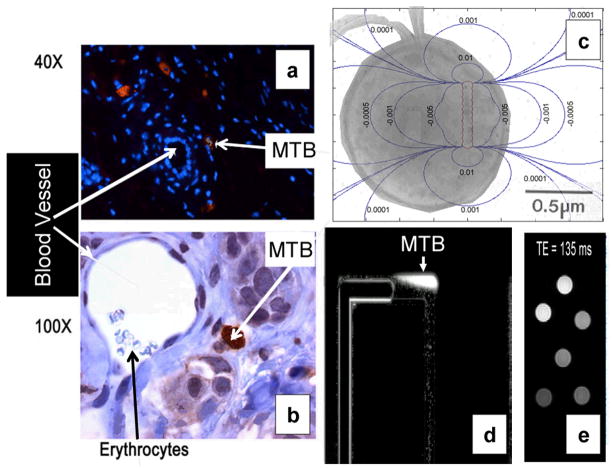Fig. 7.
Results validating the possibility of targeting tumors by controlling magnetotactic bacteria in microvasculature networks; (a) and (b) microscopy images (40× and 100× respectively) of the bacteria after being targeted far in the denser interstitial region of a tumor from the blood vessels; (c) Electron microscopy image of one MC-1 bacterium used for the experiments showing the two flagella and the chain of magnetosomes in the cell with the superposed distortion of the surrounding magnetic field expressed in ppm allowing the bacteria to be tracked deep in human body using MRI; (d) agglomeration of MC-1 bacteria being controlled to swim along pre-determined paths in microchannels mimicking part of the microvasculature and tracked here under an optical microscope (see media extension 2); and (e) various concentrations of MC-1 magnetotactic bacteria being detected and imaged with the same clinical MRI system used for the experiments.

